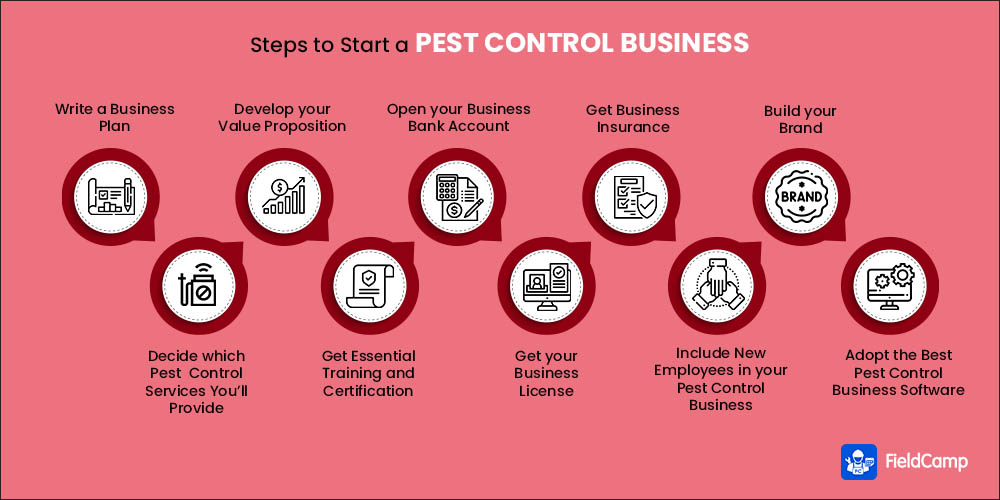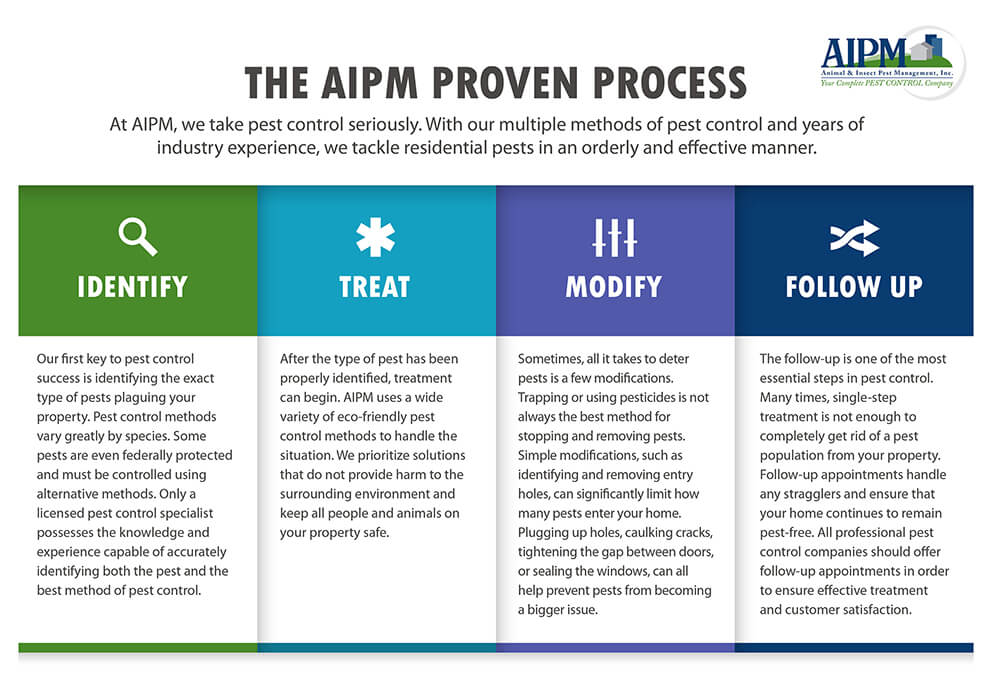The Best Guide To Pestwise
Getting My Pestwise To Work
Table of ContentsThe Greatest Guide To Pestwise3 Easy Facts About Pestwise ExplainedThe Main Principles Of Pestwise 5 Easy Facts About Pestwise ExplainedThe 6-Second Trick For PestwiseNot known Incorrect Statements About Pestwise Pestwise - QuestionsExcitement About PestwiseGetting The Pestwise To WorkUnknown Facts About Pestwise
A microorganism should not be thought about an insect till it is shown to be one. Classifications of bugs consist of: continuous bugs that arc nearly constantly existing and need regular control.Accurate recognition is the initial step in an effective pest monitoring program. Never ever try a bug control program up until you ensure what the pest is. Mosquito Control. The more you understand about the bug and the aspects that influence its development and spread, the less complicated, extra economical, and much more effective your parasite control will be
The 6-Minute Rule for Pestwise
As a certified applicator, you need to be familiar with the pests you are likely to experience in the kind of work in your accreditation category. To be able to determine and regulate bugs, you need to know: the physical functions of the pests likely to be run into. qualities of the damages they cause, their advancement and biology, whether they are constant, occasional.
Create as little injury as possible to whatever except the pest. It could cost more to manage the bug than would certainly be lost because of the bug's damages.
The 7-Minute Rule for Pestwise

The intent is to reduce the number of bugs to a level where the damage they are creating is appropriate. When a pest's visibility is found and the choice is made that control is necessary, reductions and avoidance often are joint goals.
is an uncommon objective in exterior parasite situations, because it is hard to achieve. Typically the goal is prevention and/or reductions. Removal is periodically attempted when a foreign parasite has been inadvertently presented yet is not yet developed in a location. Such obliteration strategies frequently are sustained by the Federal government.
An Unbiased View of Pestwise
Confined environments normally are smaller, less complicated, and much more conveniently controlled than exterior areas. In numerous confined locations, such as houses; schools; workplace buildings; and wellness care, food processing, and food prep work facilities, specific bugs can not or will certainly not be endured.
Thresholds might be based on esthetic, health and wellness, or financial considerations. These levels, which are referred to as "action thresholds," have been determined for numerous bugs. A limit often is established at the level where the economic losses created by insect damages, if the pest populace remained to grow, would certainly be higher than the price of regulating the insects.
As an example, the existence of any kind of rodents in food processing centers pressures action. In homes, people usually act to manage some bugs, such as rodents or cockroaches, also if just one or a couple of have actually been seen. In most pest control circumstances, the location to be protected should be kept track of (inspected or hunted) frequently.
The Single Strategy To Use For Pestwise

There is no tolerance for the visibility of germs in running spaces and other clean and sterile areas of health treatment facilities. In these circumstances, routine pest control measures are required to avoid parasites from entering a location and to get rid of any insects that might exist. Bug control involves greater than simply recognizing an insect and using a control tactic.
All of these can be affected by the pest control determines you pick. Unless you take into consideration the possible impacts on the entire system within which the insect exists. your pest control effort can cause injury or bring about continued or brand-new insect issues. Rely upon your own great judgment and, when chemicals belong to the technique, on the chemical labeling.
Fascination About Pestwise
The actions of every kind of organism or part sharing the site usually influence the activities and health of several others. When the equilibrium is disrupted, certain microorganisms might be destroyed or decreased in number, and others often the parasites - might dominate. Integrated insect administration is the integrating of suitable insect control strategies into a solitary plan (strategy) to lower insects and their damage to an appropriate level.
Relying only on chemicals for bug control can cause pests to establish resistance to pesticides, can trigger episodes of various other insects, and can damage surfaces or non-target microorganisms. With some types of bugs, usage of pesticides as the only strategy will certainly accomplish really bad control.
Weather condition conditions, particularly temperature, day size, and moisture, impact pests' activity and their price of reproduction. Parasites might be killed or suppressed by rainfall, freezing temperature levels, dry spell, or various other adverse weather. Environment also affects parasites indirectly by influencing the development and growth of their hosts. review A populace of plant-eating parasites is connected to development of its host plants.
Rumored Buzz on Pestwise
Birds, reptiles, amphibians, fish, and animals feed on some pests and help manage their numbers. Many predacious and parasitical bug and insect-like varieties feed on other microorganisms, some of which are parasites.
Pest populations can thrive only as long as their rood and water supply lasts. As soon as the food resource - plant or pet - is exhausted, the insects pass away or become inactive.
Top Guidelines Of Pestwise
All-natural controls frequently do not control bugs promptly or completely sufficient to stop inappropriate injury or damage. Some plants, pets, and frameworks stand up to bugs much better than others.
Use of immune kinds, when available, helps maintain parasite populations below hazardous degrees by making problems much less desirable for the insects. Host resistance works in three major ways: Chemicals in the host fend off the pest or protect against the bug from completing its life cycle. The host is a lot more energetic or tolerant than other varieties and hence much less likely to be seriously harmed by insect attacks.
All about Pestwise
Biological control includes the use of all-natural enemies bloodsuckers, killers, and microorganisms. You can supplement this all-natural control by launching more of an insect's adversaries right into the target location or by presenting brand-new enemies that were not in the location before.
However, under correct conditions, adequate control can be accomplished to eliminate the hazard to the plant or pet to be safeguarded. Organic control additionally consists of approaches by which the insect is biologically changed, as in the production and release or multitudes of sterilized males and the use of pheromones or juvenile hormonal agents.
Positioned in a catch. they can bring in the pests in an example area to ensure that insect numbers can be approximated. Pheromones likewise can be a control tool. Often a made duplicate of the scent that a women insect uses to bring in males can be used to confuse men and stop breeding, leading to lower varieties of bugs.
The Only Guide for Pestwise
(https://medium.com/@josehawkins01/about)Cultural methods in some cases are used to decrease the numbers or insects that are assaulting grown plants. These methods change the atmosphere, the condition of the host plant, or the habits of the insect to avoid or reduce an invasion. They interfere with the normal relationship between the parasite and the host plant and make the pest less likely to endure, expand, or replicate.
Tools, makers, and other techniques used to regulate insects or alter their environment arc called mechanical or physical controls. Catches, screens, obstacles, fences, webs, radiation, and electrical energy often can he made use of to prevent the spread or parasites right into an area. Lights, warm, and refrigeration can alter the environment sufficient to reduce or get rid of some bug populaces.